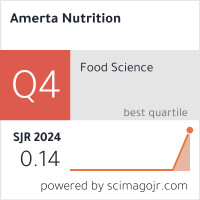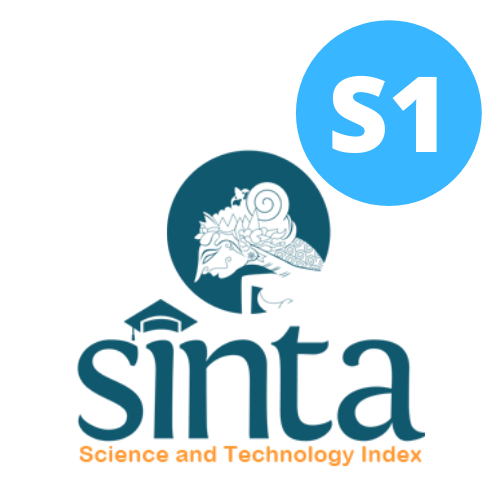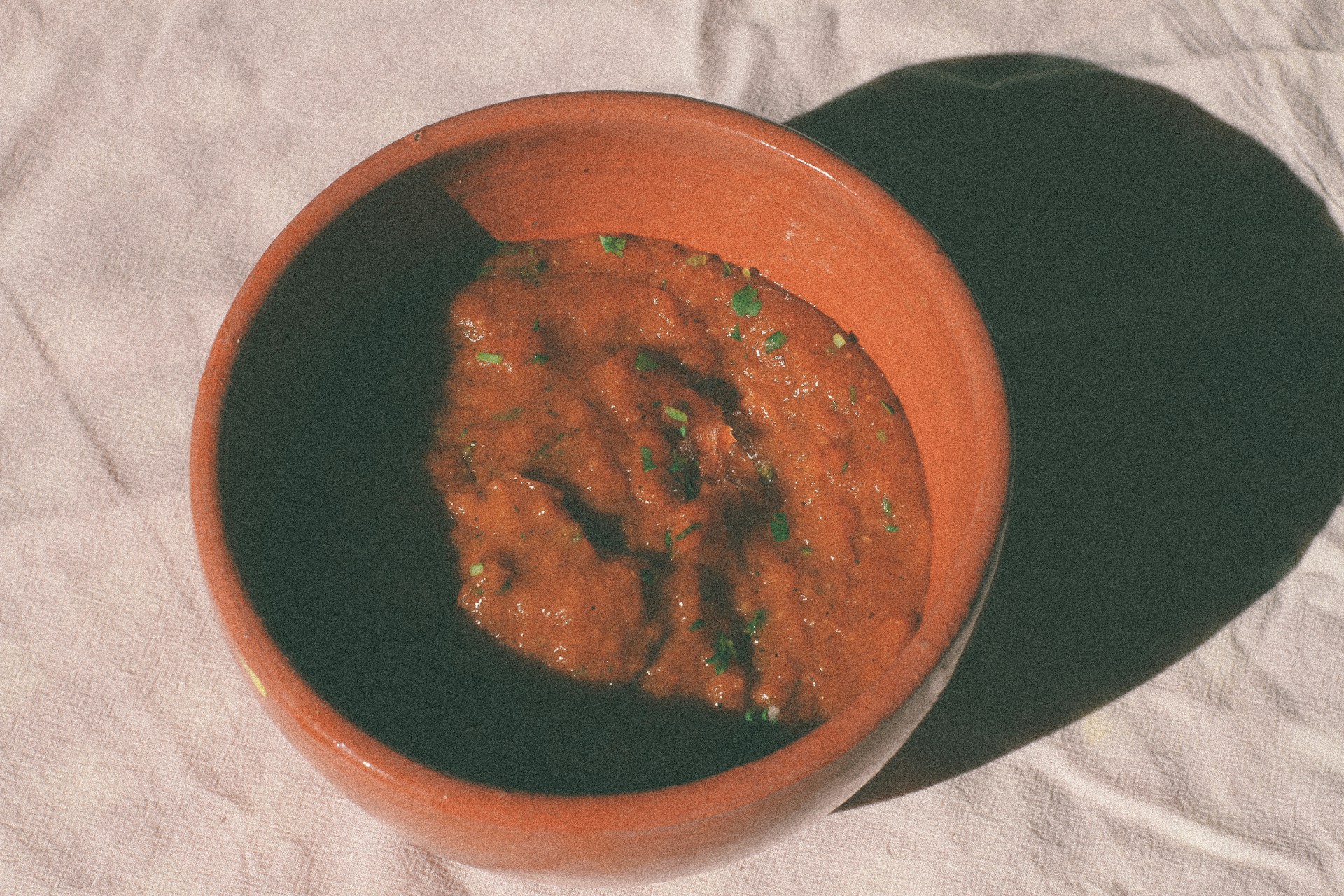Association between Glycemic Index (GI), Glycemic Load (GL), and Dietary Inflammatory Index (DII) with Metabolic Syndrome in Young Adult Women with Obesity in Semarang Indonesia
Background: Dietary choice plays an important role in the incidence of metabolic syndrome in young adult women. Consuming foods that follow current trends has insulinogenic and inflammatory effects.
Objectives: Analysis of the relationship between the Glycemic Index (GI), Glycemic Load (GL), and Dietary Inflammatory Index (DII) and the incidence of metabolic syndrome in obese women in Semarang
Methods: This research was carried out at a time when there were restrictions on community activities due to the COVID-19 pandemic. The sampling technique was consecutive sampling and cross-sectional design. The subjects in this study were 126 people with the characteristics of abdominally obese women (LP > 80cm) aged 19–25 years in the Semarang City area of Indonesia. Intake conversion guidelines use the International Table of Glycemic Index and the overall inflammatory effect score.
Results: A total of 11.9% of subjects experienced SM. The mean daily GI intake was 176.7±44.4 and GL was 458.4±183.3. The mean DII score was 28.76 ± 267.7 with a history of subject intake with a pro-inflammatory score of 71.4% and 28.6% anti-inflammatory. The relationship test resulted in the highest proportion of SM on the GI diet being 21.4% (p = 0.066). Meanwhile, the highest GL diet was 16.7% (p = 0.207). Subjects with SM status had an anti-inflammatory diet profile of 16.7% and a pro-inflammatory diet profile of 10% (p = 0.362). Meanwhile, the test of the relationship between diet profile and SM parameters resulted in the highest GI diet being 40.5% with high TG (p = 0.008), the highest GL diet being 59.5% with low HDL-C (p = 0.009), the DII diet being high GDP (p = 0.022), and the high DII diet being 47.8% with low HDL-C (p = 0.078). The test results for differences in GI and GL profiles between pro-inflammatory and anti-inflammatory diets were p = 0.295 and p = 0.483.
Conclusions: There is a borderline significant relationship between the dietary GI profile and the incidence of SM. Meanwhile, with SM parameters, there is a relationship between the GI diet profile and the incidence of TG, the GL diet
Rachmi, C., Li, M. & Baur, A. Overweight and Obesity in Indonesia: Prevalence and Risk Factors-A Literature Review. Public Health 147, 20–129 (2017).
Nelms, M. N., Sucher, K. P. & Lacey, K. Diseases and Disorders of Energy Imbalance. in Nutrition Therapy and Pathophysiology, Third Edition Third Edition (Cengage Learning, 2016).
World Health Organization (WHO). Trends in Noncommunicable Disease Mortality and Risk Factors, and Deaths From Injuries and Violence. (World Health Statistics 2020, 2020).
World Health Organization (WHO). Cardiovascular Disease. WHO https://www.who.int/health-topics/cardiovascular-diseases/#tab=tab_1 (2020).
Ahima, R. S. Overview of Metabolic Syndrome. in Metabolic Syndrome: A Comprehensive Textbook (Springer International Publishing, 2016).
Dijk, S. J., Tellam, R. L., Morrison, J. L. & et al. Recent developments on the role of epigenetics in obesity and metabolic disease. Clin. Epigenetics 7, 1–12 (2015).
Broughton, D. E. & Moley, K. H. Obesity and female infertility: potential mediators of obesity's impact. Fertil. Steril. 107, 840–847 (2017).
Wiardani, N. K. Penatalaksanaan Diet Obesitas. in Ilmu Gizi :Teori dan Aplikasi (eds. Hardinsyah & Supariasa, D. N.) (Buku Kedokteran EGC, 2017).
Vrolix, R. & Mensink, R. P. Effects of glycemic load on metabolic risk markers in subject at increased risk of developing metabolic syndrome. Am J Clin Nutr 92, (2010).
Teymoori, F., Farhadnejad, H., Moslehi, N. & et al. The association of dietary insulin and glycemic indices with the risk of type 2 diabetes. Clin. Nutr. (2020).
Hosseini, E., Lachat, C., Mohammadifard, N. & et al. Associations of dietary glycemic index and glycemic load with glucose intolerance. Int J Diabetes Dev Ctries (2013) doi:10.1007/s13410-013-0158-7.
Zhu, J., Ling, Y., Mi, S. & et al. Association between dietary inflammatory index and upper aerodigestive tract cancer risk: A systematic review and dose-response meta-analysis. Oral Oncol. 103, (2020).
Mazidi, M., Shivappa, N., Wirth, M. D. & et al. Dietary inflammatory index and cardiometabolic risk in US adults. Atherosclerosis 276, 23–27 (2018).
Kase, B. E., Liu, J., Wirth, M. D. & et al. Associations between dietary inflammatory index and sleep problems among adults in the United States, NHANES 2005-2016. Sleep Heal. 1–8 (2020).
Neufcourt, L., Assmann, K., Fezeu, L. & et al. Prospective association between the dietary inflammatory index and metabolic syndrome: Findings from the SU.VI.MAX study. Nutr. Metab. Cardiovasc. Dis. 25, 988–996 (2015).
Utami, S. C., Dieny, F. F., Kusumastuti, A. C. & Tsani, A. F. A. Association of dietary inflammatory index with visceral adiposity index among obese female adolescents. Int. J. Pharm. Res. 12, 1365–1373 (2020).
Mohammadifard, N., Mansourian, M., Sajjadi, F. & et al. Association of glycaemic index and glycaemic load with metabolic syndrome in an Iranian adult population: Isfahan Healthy Heart Program. Nutr. Diet. (2015) doi:10.1111/1747-0080.12288.
Soewondo, P., Purnamasari, D., Oemardi, M., Waspadji, S. & Soegondo, S. Prevalence of Metabolic Syndrome Using NCEP/ATP III Criteria in Jakarta, Indonesia: The Jakarta Primary Non-communicable Disease Risk Factors Surveillance 2006. Acta Med Indones-Indones J Intern Med 42, 199–203 (2010).
Rini, S. Sindrom Metabolik. J Major. 4, 88–93 (2015).
Azadbakht, L., Mohammadifard, N., Akhavanzanjan, M. & et al. The association between dietary glycemic index, glycemic load and diet quality indices in Iranian adults: results from Isfahan Healthy Heart Program. J. Food Sci. Nutr. 1–10 (2016).
Soviana, E. & Pawestri, C. Efek konsumsi BM yang mengandung GL terhadap kadar glukosan darah pada pasien DM tipe 2. Darussalam Nutr. J. 4, 94–103 (2020).
Arellano, A. G., Ramallal, R., Canela, M. R. & et al. Dietary Inflammatory Index and Incidence of Cardiovascular Disease in the PREDIMED Study. Nutrients 7, 4124–4138 (2015).
Kizil, M., Metin, M. T., Gumus, D. & et al. Dietary inflammatory index is associated with serum C-reactive protein and protein energy wasting in hemodialysis patients: A cross-sectional study. Nutr. Res. Pract. 10, 404–410 (2016).
Driyah, S., Oemiati, R. & Hartati, N. S. Prediktor Sindrom Metabolik : Studi Kohor Prospektif Selama Enam Tahun di Bogor, Indonesia. Media Litbangkes 29, 215–224 (2019).
Pasmans, K., Meex, R. C., Loon, L. J. & Blaak, E. E. Nutritional strategies to attenuate postprandial glycemic response. Obes. Rev. 2–11 (2022).
Jun, S., Kee, S., Lee, J. & Kim, J. Diets high in glycemic index and glycemic load are associated with an increased risk of metabolic syndrome among Korean women. Nutr. Metab. Cardiovasc. Dis. 32, 1154–1164 (2022).
Youn, S., Woo, H. D., Cho, Y. A. & et al. Association between dietary carbohydrate, glycemic index, glycemic load, and the prevalence of obesity in Korean men and women. Nutr. Res. 32, 153–159 (2012).
Moghaddam, A. S., Keshteli, A. H., Haghighatdoost, F. & et al. Dietary glycemic index and glycemic load in relation to general obesity and central adiposity among adults. Clin. Nutr. 38, 2936e2942 (2019).
Choi, Y., Chang, Y., Ryu, S. & et al. Relation of Dietary Glycemic Index and Glycemic Load to Coronary Artery Calcium in Asymptomatic Korean Adults. Am J Cardiol 116, 520–526 (2015).
Yadav, D., Mishra, M., Jadaun, P. & et al. Glycemic index and glycemic load in cardiovascular disease risk. Prog. Nutr. 18, 95–101 (2016).
Finley, C. E., Barlow, C. E., Halton, T. L. & et al. Glycemic Index, Glycemic Load, and Prevalence of the Metabolic Syndrome in the Cooper Center Longitudinal Study. J Am Diet Assoc 110, 1820–1829 (2010).
Suissa, K., Benedetti, A., Henderson, M. & et al. Effects of dietary glycemic index and load on children's cardiovascular risk factors. Ann. Epidemiol. 40, 1–7 (2019).
Shivapppa, N., Steck, S. E., Hurley, T. G. & et al. Designing and developing a literature-derived, population-based dietary inflammatory index. Public Health Nutr. 17, 1689–1696 (2014).
Carvalho, C. A. et al. The dietary inflammatory index and insulin resistance or metabolic syndrome in young adults. Nutrition 58, 187–193 (2019).
Kouvari, M., Oanagiotakos, D. B. & Naumovski, N. Dietary anti-inflammatory index, metabolic syndrome and transition in metabolic status; a gender-specific analysis of ATTICA prospective study. Diabetes Res. Clin. Pract. 161, (2020).
Saghafi-Asl, M. et al. The association of dietary patterns with dietary inflammatory index, systemic inflammation, and insulin resistance, in apparently healthy individuals with obesity. Sci. Rep. 11, 7515 (2021).
Ramallal, R., Toledo, E., Gonzalez, M. A. & et al. Dietary Inflammatory Index and Incidence of Cardiovascular Disease in the SUN Cohort. PLoS One 10, 1–15 (2015).
Agraib, L. M., Azab, M., Shudifat, A.-E. & et al. Dietary inflammatory index and odds of coronary artery disease in a case-control study from Jordan. Nutrition 63–64, 98–105 (2019).
Kim, Y., Chen, J., Wirth, M. D. & et al. Lower Dietary Inflammatory Index Scores Are Associated with Lower Glycemic Index Scores among College Students. Nutrients 10, 1–12 (2018).
Oliveira, T. M. S. et al. Dietary inflammatory index and prevalence of overweight and obesity in Brazilian graduates from the Cohort of Universities of Minas Gerais (CUME project). Nutrition 71, (2020).
Copyright (c) 2025 Amerta Nutrition

This work is licensed under a Creative Commons Attribution-ShareAlike 4.0 International License.
AMERTA NUTR by Unair is licensed under a Creative Commons Attribution-ShareAlike 4.0 International License.
1. The journal allows the author to hold the copyright of the article without restrictions.
2. The journal allows the author(s) to retain publishing rights without restrictions
3. The legal formal aspect of journal publication accessibility refers to Creative Commons Attribution Share-Alike (CC BY-SA).
4. The Creative Commons Attribution Share-Alike (CC BY-SA) license allows re-distribution and re-use of a licensed work on the conditions that the creator is appropriately credited and that any derivative work is made available under "the same, similar or a compatible license”. Other than the conditions mentioned above, the editorial board is not responsible for copyright violation.








































